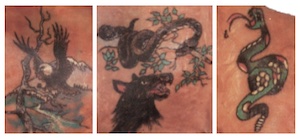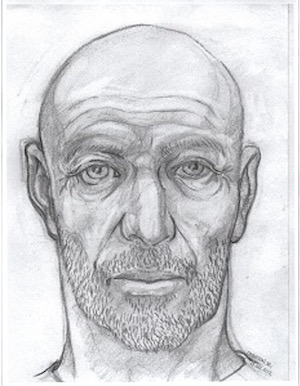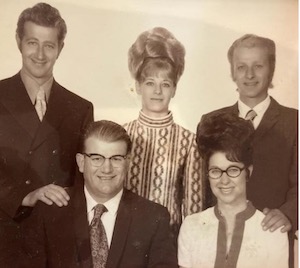Summary
In July 1989, an employee at Spokane Northside Landfill in Spokane, Washington was using a bulldozer to clear an area of debris when he noticed that he had uncovered what appeared to be human remains. On further inspection, the body was that of a White male wearing blue slacks, a blue jacket, and a light-colored shirt. The man had visible injuries, including skin tears and broken bones. Today the landfill is private, but in 1989 it was unmonitored, open to the public, and only maintained by employees every 2-3 weeks. Because of the injuries and the accessibility of the landfill, the death was initially considered suspicious. However, an autopsy revealed that, rather than being the cause of death, the decedent’s injuries likely occurred when the body was struck by the bulldozer.
Due to the advanced state of decomposition, there were no organs for examination and no tissue suitable for toxicology testing. A definitive cause of death could not be identified, leaving the cause and manner of death undetermined. Because of postmortem changes, the decedent’s face was not recognizable and fingerprints could not be obtained, so the usual forms of identification at the time could not be used. The unknown man was buried at Fairmount Cemetery as an unidentified male while the Spokane Police Department (SPD) and the Spokane County Coroner continued investigating his identity and the circumstances of his death.
 The man had several distinct tattoos which were preserved for public viewing. Beyond this, the only individualizing characteristics noted during autopsy were stubble present on the man’s chin and upper lip and possible degenerative joint disease. A forensic pathologist estimated the age of the man to be between 40-60 years and he was between 5’4” and 5’6” tall. Fingerprints were eventually obtained by the Federal Bureau of Investigation (FBI), but did not match any prints in the existing database. The decedent’s teeth were charted by a forensic dentist for comparison to missing persons’ records, but this did not result in a match.
The man had several distinct tattoos which were preserved for public viewing. Beyond this, the only individualizing characteristics noted during autopsy were stubble present on the man’s chin and upper lip and possible degenerative joint disease. A forensic pathologist estimated the age of the man to be between 40-60 years and he was between 5’4” and 5’6” tall. Fingerprints were eventually obtained by the Federal Bureau of Investigation (FBI), but did not match any prints in the existing database. The decedent’s teeth were charted by a forensic dentist for comparison to missing persons’ records, but this did not result in a match.
In the months following the discovery of the unknown man, SPD detectives canvassed local tattoo parlors, bars, homeless shelters, nearby apartment buildings, and even the county jail with illustrations of the decedent’s tattoos and his general description, searching for someone to identify him to no avail. The illustrations and description were then released to the media. This resulted in several possible leads, all of which were eventually ruled out.
Following the autopsy in 1989, the decedent’s skull was retained by the Spokane County Coroner for use in later identification efforts. In 2002, another examination of the skull was completed at the Spokane County Medical Examiner’s Office (SCMEO) so the case could be added to the Washington State Patrol Unidentified Human Remains Project list. In 2004 the SCMEO sent tissue samples from this case to the FBI in hopes of extracting DNA. They obtained a mitochondrial DNA profile and uploaded it to the Combined DNA Index System (CODIS) for comparison to DNA profiles in a variety of databases. In 2008, additional samples were sent and a nuclear DNA profile was obtained and added to CODIS. Neither of these profiles resulted in a match.
 Simultaneously, while awaiting DNA testing and advancements, investigators continued to work on the case in hopes of identifying the decedent by other means. The skull was used for the completion of facial reconstruction images by forensic artists. These artists used cranial measurements and photographs of the decedent to create an artistic interpretation of what he may have looked like in life with hopes that someone may recognize similarities with a man they knew and identify him. As another method of circulating the case to law enforcement and the public it was added to several databases, profiles were created in the National Crime Information Center database (NCIC) as case #U419827783, the Washington Crime Information Center database (WACIC) as case #90U0000003, the Doe Network as case 362UMWA, and the National Missing and Unidentified Persons System (NamUs) as case UP490.
Simultaneously, while awaiting DNA testing and advancements, investigators continued to work on the case in hopes of identifying the decedent by other means. The skull was used for the completion of facial reconstruction images by forensic artists. These artists used cranial measurements and photographs of the decedent to create an artistic interpretation of what he may have looked like in life with hopes that someone may recognize similarities with a man they knew and identify him. As another method of circulating the case to law enforcement and the public it was added to several databases, profiles were created in the National Crime Information Center database (NCIC) as case #U419827783, the Washington Crime Information Center database (WACIC) as case #90U0000003, the Doe Network as case 362UMWA, and the National Missing and Unidentified Persons System (NamUs) as case UP490.
Through the years, the SCMEO and SPD were contacted by family members with missing relatives and law enforcement agencies offering possible leads on this John Doe’s identity, but none of these leads resulted in identification. Without investigative leads, no further investigative steps could be taken to determine how he came to be in the landfill, and the case went cold despite the exhaustive efforts of investigators.
In July 2023, the Spokane County Medical Examiner's Office submitted forensic evidence to Othram in The Woodlands, Texas. Othram scientists developed a suitable DNA extract from the evidence and then used Forensic-Grade Genome Sequencing® to build a comprehensive DNA profile for the unknown man. Othram's in-house forensic genetic genealogy team used the profile in a genetic genealogy search to develop investigative leads that were returned to Spokane County Medical Examiner Office investigators. Investigators used these new leads to continue their search for the man's identity.
A biological son of the unknown man had uploaded his DNA profile into a genetic genealogy database; he had been adopted at birth and was in search of his biological family. Although he didn’t know who his biological parents were, he had done extensive family tree research and was able to provide a family name and possible leads on who his father may be. Investigators with the Spokane County Medical Examiner’s Office were then able to locate a living biological sister who submitted a DNA sample for reference testing. In October 2023, the reference test confirmed the sibling relationship between the unknown man and his sister, and Chief Medical Examiner Dr. Veena Singh officially identified the man as Clifford Wayne Bippes, born in Tekoa, Washington on September 25, 1943.
 Clifford, who served in the US Army, was the oldest of three siblings and is pictured with his family in the image at left. His sister last saw him about six months prior to his death, and at that time he had none of the pictured tattoos. She was unable to reach him for several months and reported him missing in January 1990, after he failed to call or visit on her birthday. She searched for him extensively, but was never able to find him. After exhausting all other avenues, she placed a headstone honoring him, listing his date of death as April 1991.
Clifford, who served in the US Army, was the oldest of three siblings and is pictured with his family in the image at left. His sister last saw him about six months prior to his death, and at that time he had none of the pictured tattoos. She was unable to reach him for several months and reported him missing in January 1990, after he failed to call or visit on her birthday. She searched for him extensively, but was never able to find him. After exhausting all other avenues, she placed a headstone honoring him, listing his date of death as April 1991.
The Spokane Police Department and the Spokane County Medical Examiner’s Office urge anyone with information about Clifford’s death to contact the police through Crime Check (509-456-2233).
